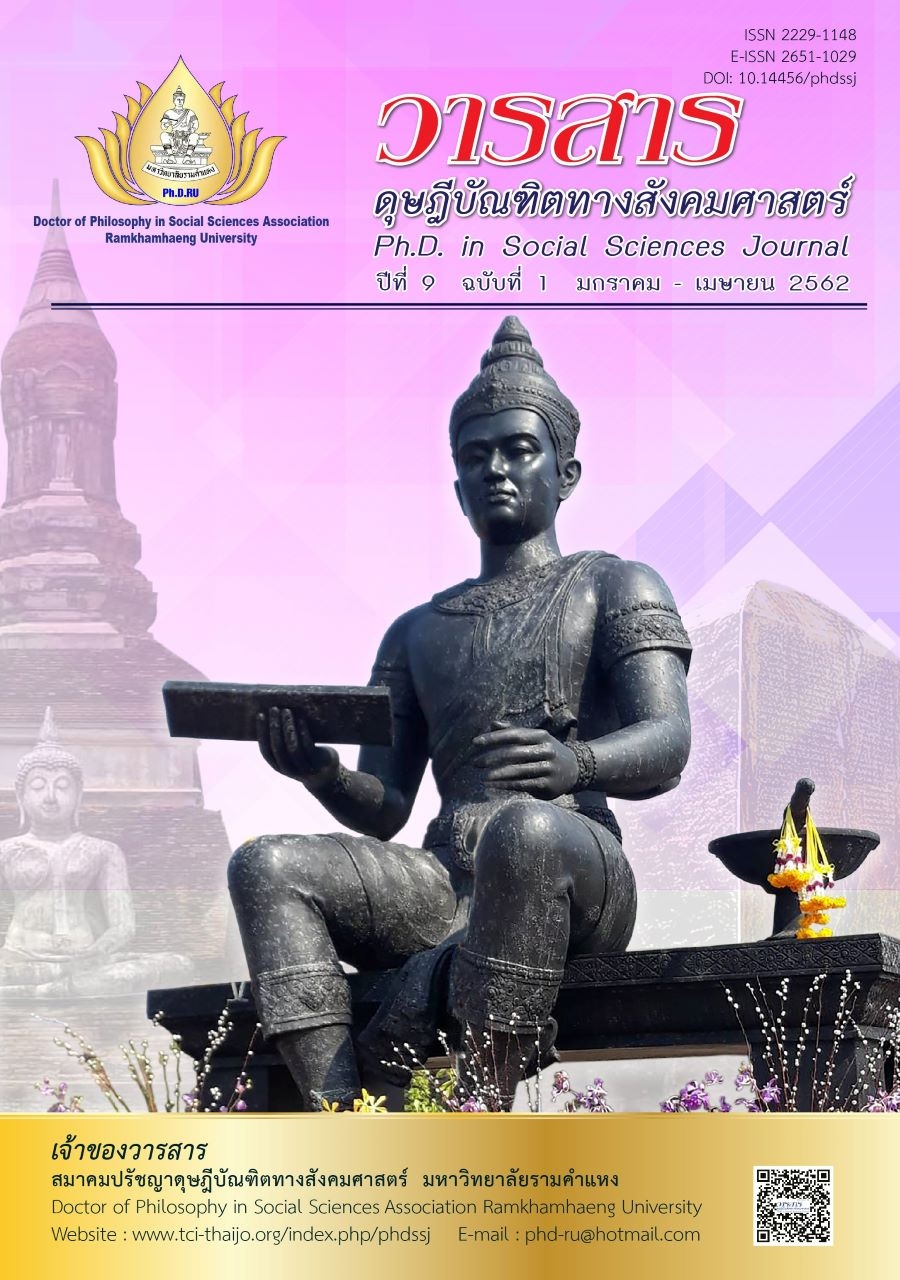The Successful Model to Promote Small and Medium Enterprises (SMEs) in the Northern Provinces of Thailand
Main Article Content
Abstract
This research aimed to study the factors that affect success and develop a success model to promote small and medium enterprises (SMEs) in the northern provinces of Thailand. This research was mixed method consists of qualitative and quantitative research. There was the sample population was entrepreneurs of small and medium enterprises (SMEs) in the northern provinces of Thailand and government stakeholders. The instruments used in the research were in-depth interviews 8 people and focus group discussion 20 people and questionnaires 400 people. The data were content analyzed to found the frequency, percentage, mean, standard deviation and Artificial Neural Networks, ANN analyzed and Logistic Regression analyzed.
The results showed that the factors affecting the success of small and medium enterprises (SMEs) in the northern provinces of Thailand were the combination of demographic factors and business factors, Which were mostly in the form of single owner’s business and they were a manufacturing and service business. They had the duration of business operation was not over 5 years. Most successfully achieved the objectives set. In terms of products and service have been known to the public. It made the business more known to consumers. When operating for a period of time the business had more assets. And the success model of Small and Medium Enterprises (SMEs) in the northern provinces of Thailand consisted of Financial factors Strategic factors Political and Legal factors Business age factor and Location factors of the business.
Article Details
Academic articles, research articles, and book reviews in the Ph.D. in Social Sciences Journal are author’s opinions, and not the publisher’s, and is not the responsibility of the Ph.D. in Social Sciences Journal Philosophy Association, Ramkhamhaeng University. (In the case that research is done on human, the researcher has to be trained in Ethics for Doing Research on Human Training and has to produce the evidence of the training).
References
Board of Directors One Tambon One Product. (2003). The meaning of the product type as a guideline for selecting entrepreneurs according to project supper One Tambon One Product in Thailand 2003. Retrieved November 30, 2018, from district.cdd.go.th/nongruea/services [In Thai]
Chowdhury, M. S., Alam, Z., & Arif, M. I. (2013). Success factors of entrepreneurs of Small and Medium sized Enterprises: Evidence from Bangladesh. Business and Economic Research, 3(2), 38-52.
Chittenden, F., & Ambler. T. (2015). A question of perspective: Impact assessment and the perceived costs and benefits of new regulations for SMEs. Retrieved November 30, 2018, from https://doi.org/10.1068/c12211b
Chittithaworn, C., Islam, M. A., Keawchana, T., & Yusuf, D. H. M. (2011). Factors affecting business success of Small and Medium Enterprises (SMEs) in Thailand. Asian Social Science, 7(5), 180-190.
Everett, J., & Watson, J. (1998). Small business failures and external risk factors. Small Business Economics, 11(4), 371-390.
Farsi, J. Y., & Toghraee, M. T. (2014). Identification the main challenges of small and medium sized enterprises in exploiting of innovative opportunities case study: Iran SMEs. Retrieved November 30, 2018, from https://doi.org/10.1186/2251-7316-2-4
Frese, M., & Kruif, M. D. (2000). Psychological success factor of entrepreneurship in Africa: A selective literature review. In M. Frese (Ed.), Success and failure of microbusiness owners in Africa: A psychological approach (pp.1-30). Westport, CT: Quorum Books.
Kader, R. A., Mohamad, A. B., Azid Hj., & Ibrahim, C. (2009). Success factors for small rural entrepreneurs under the One-District-One-Industry. Contemporary Management Research, 5(2), 147-162.
Knight., G. A. (2001). Entrepreneurship and strategy in the international SMEs. Journal of International Management, 7(3), 155-171.
Musa, H., & Chinniah, M. (2015). Malaysian SMEs development future and challenges on going green. Retrieved November 30, 2018, from https://doi.org/10.1016/j.sbspro.2016.05.457
National Statistical Office. (2017). Industrial continually (basic information) whole Kingdom. Bangkok: Ministry of Digital Economy and Society. [In Thai]
Office of Small and Medium Enterprise Promotion. (2017). Manufacturing sector entrepreneur of sentiment index’s SMEs quarter 3/2560 north region. Retrieved November 30, 2018, from www.ba.cmu.ac.th/ bwc/wp-content/uploads/2018/03/sms/-Q4_59.pdf [In Thai]
Peck, F., Mulvey G., & Jackson. K. (2018). Regulation and growth-oriented small businesses in north-west England. Retrieved November 30, 2018, from https://doi.org/10.1068/c12211b
Phetprasert, N., & Wongkun, P. (2002). Community enterprise foundation economic mechanisms. Bangkok: Edison. [In Thai]
Singh, J. P., & Shishir, P. (2008). Impact of working capital management in the profitability of Hindalco Industries Limited. The ICFAI University Journal of Financial Economics, 6(4), 62-72.
Smallbone, D., & Welter, F. (2001). The role of government in SMEs development in transition economies. The International Small Business Journal (ISBJ), 19(4), 63-77.
Teekasap, S., & Maiman, C. (2013). Industry 4.0: The future of Thai industry. EAU Heritage Journal, Science and Technology, 1(1), 14-28. [In Thai]
Walker, E., & Brown, A. (2004). What Success Factors are Important to Small Business Owners. International Small Business Journal, 22(6), 577-594.
Wangbenmud C., & Bindulem T. (2014). The key success factors for Small and Medium Enterprises in Muang Hadyai, Songkha province. Journal of Faculty of Management Science, Surat Thani Rajabhat University, 1(1), 109-123. [In Thai]
Wijewardena, H., & De Zoysa, A. (2005). A factor analytic study of the determinants of success in manufacturing SMEs. 35th EISB conference-sustaining the entrepreneurial spirit over time, Barcelona, Spain.
Wijewardena, H., & Tibbits, G. E. (1999). Factors contributing to the growth of small manufacturing firms: Data from Australia. Journal of Small Business Management, 37(2), 88-95.


